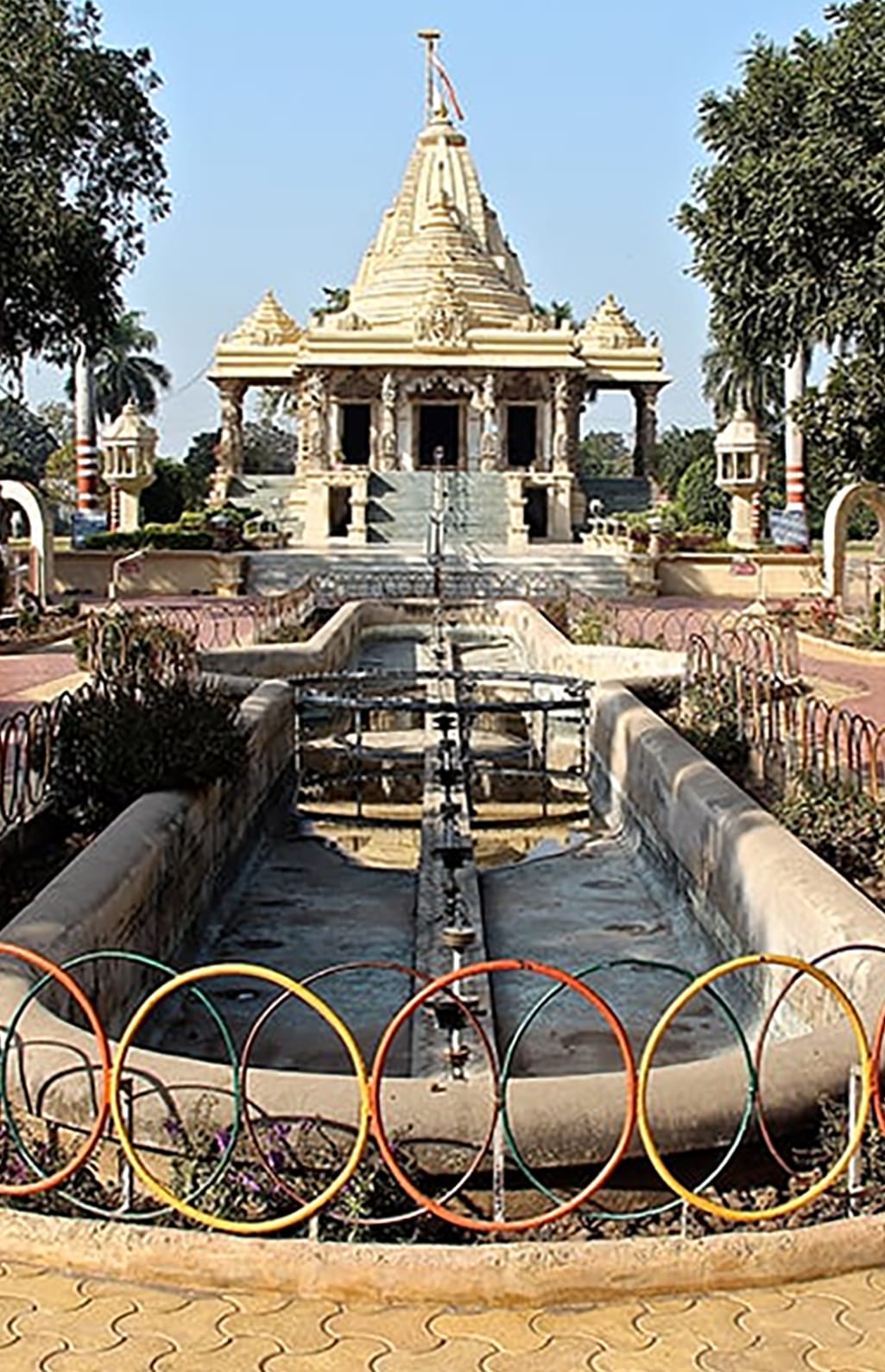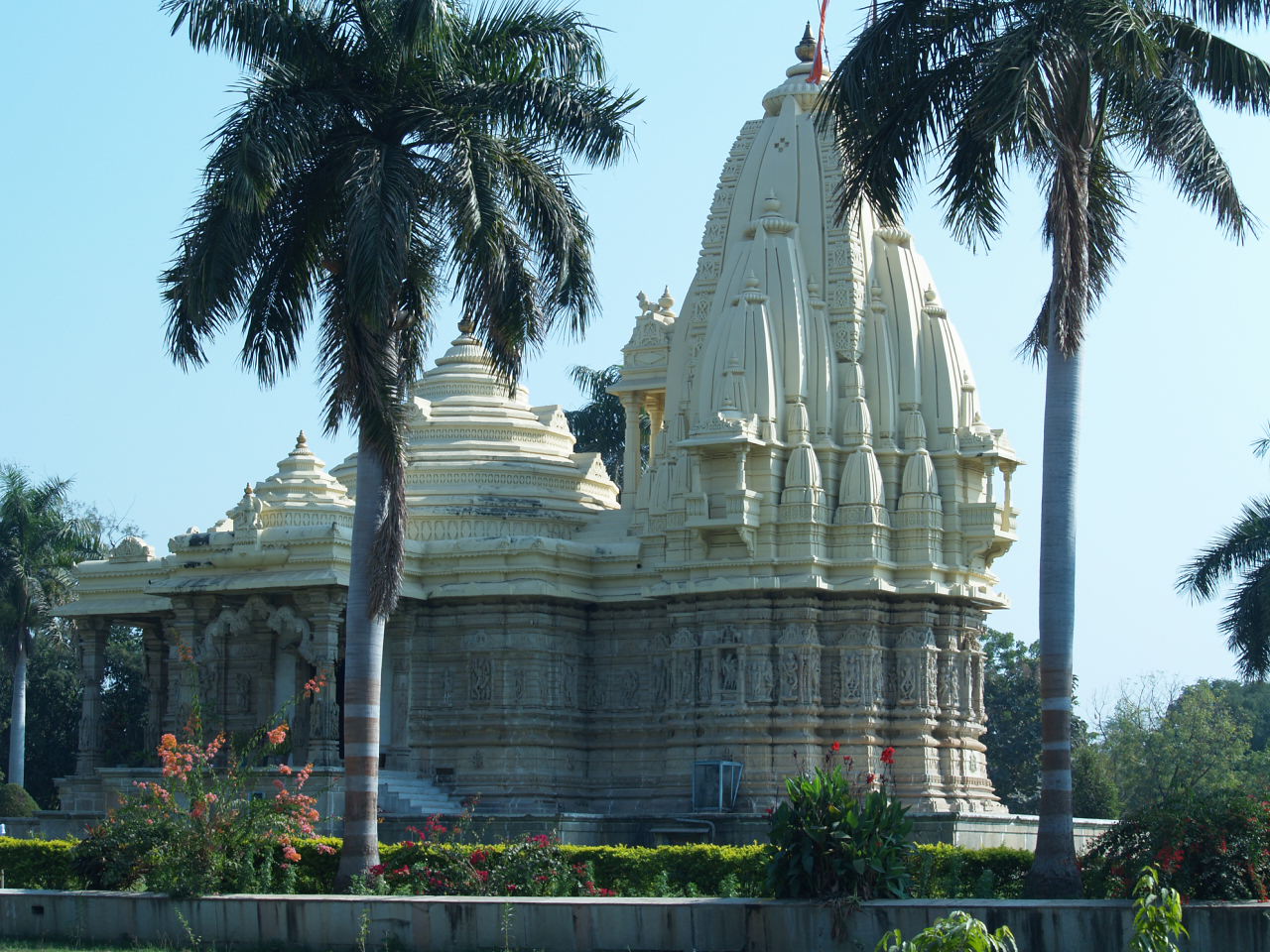Kayavarohan
Kripalu’s First Visit to Kayavarohan
In December 1955, the villagers of Kayavarohan invited Kripalu to deliver lectures. Though initially hesitant, he accepted their invitation and traveled to this village, just 25 kilometers from his native Dabhoi. Little did Kripalu know that Kayavarohan was one of India’s ancient and sacred tirthas (holy pilgrimage sites). After his final talk, the village leaders invited him to explore local temples and learn about the area’s rich history.
At the temple of Brahmeshwar Mahadev, Kripalu saw a jyotirlingam with an idol carved on its front. To his astonishment, the idol matched the divine form of his Gurudev, whom he had encountered in Rishikesh. In that moment, Kripalu realized that the true identity of his Gurudev was Lord Lalulish, the 28th incarnation of Lord Shiva.
The Divine Command
Overwhelmed by the divine revelation, Kripalu prayed for guidance. During meditation, he had visions of Kayavarohan in ancient times, including the great sage Vishvamitra and Lord Lakulish. He received a divine command to lead the revival of Kayavarohan as a sacred pilgrimage site and to help restore its spiritual culture. Though Kripalu felt the task was beyond his ability, the divine beings assured him that he was merely the instrument, and the plan would unfold through grace.
The History of Kayavarohan
Kayavarohan, or “Karvan” as it is known today, is located in Gujarat’s Vadodara district and has been a revered pilgrimage site across four eras. It was called Icchhapuri during the Satya Yuga, Mayapuri in the Treta Age, Medhavati in the Dwapara Age, and Kayavarohan in the Kali Yuga. Sage Vishvamitra had once tried to elevate Kayavarohan to the same status as Kashi, but opposition from the devas prevented this. Despite the setback, Kayavarohan remained second only to Kashi in spiritual significance.
During the Dwapara Age, Lord Lakulish, an incarnation of Lord Shiva, first manifested here, giving Kayavarohan its current name, which symbolizes the divine descent of Lord Shiva into human form.
Rebuilding the Temple
By March 5, 1974, the temple in Kayavarohan was completed as per Dadaji’s instructions. During the inauguration, Kripalu spent an hour alone in the inner sanctuary, praying and lighting incense. He experienced a profound spiritual vision in which the divine form of his Gurudev, Lord Lakulish, appeared in a radiant light. Gurudev commended Kripalu for fulfilling the task of rebuilding the temple and reassured him that his divine energy would remain in the temple forever.
Kripalu prayed for guidance on his next task—the revival of spiritual culture. Though he wished to retreat into seclusion to further his spiritual practice, Gurudev encouraged him to continue his mission among people, advising him to strive toward becoming a sthitaprajnya (one with perfect equanimity) while living in the world.

Moving Forward
Legacy of Kayavarohan
Following Gurudev’s guidance, Kripalu ensured the temple’s lingam was installed at the exact height Gurudev had specified. Today, Kayavarohan remains a popular pilgrimage site, celebrated for its association with the Lakulish Lineage of Masters and as one of the 68 tirthas dedicated to Lord Shiva, as foretold in the Shiva Purana.
Discover Kripalu's Legacy







